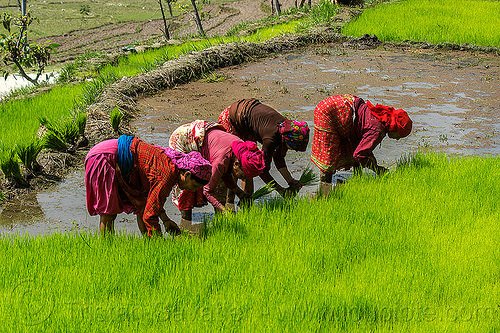Wonderful agriculture in Nepal!
In Nepal, the economy is dominated by agriculture. In the late 1980s, it was the livelihood for more than 90 percent of the population, although only approximately 20 percent of the total land area was cultivable, it accounted for, on average, about 60 percent of the GDP and approximately 75 percent of exports. Since the formulation of the Fifth Five-Year Plan (1975–80), agriculture has been the highest priority because economic growth was dependent on both increasing the productivity of existing crops and diversifying the agricultural base for use as industrial inputs.
According to the World Bank, agriculture is the main source of food, income, and employment for the majority. It provides about 33% of the gross domestic product (GDP).
In trying to increase agricultural production and diversify the agricultural base, the government focused on irrigation, the use of fertilizers and insecticides, the introduction of new implements and new seeds of high-yield varieties, and the provision of credit. The lack of distribution of these inputs, as well as problems in obtaining supplies, however, inhibited progress.[1] Although land reclamation and settlement were occurring in the Terai Region, environmental degradation and ecological imbalance resulting from deforestation also prevented progress.
Although new agricultural technologies helped increase food production, there still was room for further growth. Past experience indicated bottlenecks, however, in using modern technology to achieve a healthy growth. The conflicting goals of producing cash crops both for food and for industrial inputs also were problematic.